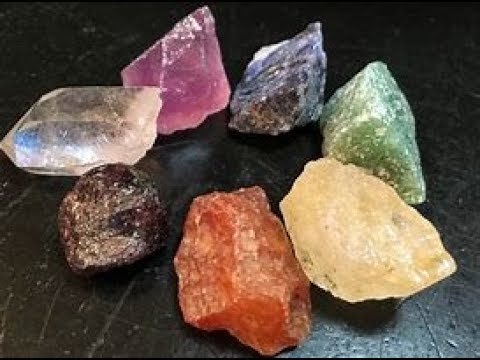How Scientists Identify Gemstones
Table of Contents
Most people rely on color to identify gemstones, however, this is not a reliable method. Rather, science has developed a number of ways to identify gems.
Gemologists are professionals not because they have memorized what dozens of gemstones look like, but because they know how to use various instruments to analyze a gem’s structure. Noting a gem’s color and hardness can help narrow the field of options, but ultimately chemistry and physics are needed to identify a gemstone.
What are Gemstones?
Gemstones are minerals considered to be valuable for their rarity, beauty, and lasting durability. Many gemstones are crystals. The University of Berkeley says in “What is a Crystal?” that a gem is crystalline when its atoms are arranged in a regular pattern. For example, the atoms can be imagined as placed at the corners of a prism.

Ultimately, the difference between gemstones comes down to atomic structure. As the Encyclopaedia Britannica points out in its entry “Sapphire (gemstone)”, sapphires come in blue, yellow, and pink. All sapphires however are made up of aluminum oxide (Al2O3). Meanwhile, diamonds are composed of carbon in a specific crystalline structure.
Common Methods Used to Identify Gemstones
The University of Berkeley points out in “Gem Identification” several factors used to distinguish gems. The hardness of the gem and what color streak the gem produces when scratched on a tile are two. The color of the gem itself is generally considered unreliable. Cleavage is another factor and refers to where a crystal tends to break. Crystals tend to break where atomic bonding is weaker. The specific gravity of the gem could also be measured; this is a comparison of the gem’s density relative to the density of water. The University of Berkeley lists the specific gravity of a variety of gems in “Listing of SG gems and gem simulants”.
Instruments Used in Identifying Gemstones
Gemologists often use refractometers to identify gems. The page “Gem Identification” goes on to explain that the refractive index or RI of a gem is a good diagnostic measure. Refractometers are used to measure the RI of a gemstone by passing light through the stone. As light passes through the stone it will slow down depending on the size and arrangement of the gemstone’s atoms. The ray of light comes out of the stone at an angle and this angle is measured and compared to previously tabulated indices.
Identification of Gemstones through Spectroscopy
The March 18, 2006 ScienceDaily article “Identifying Gems and Minerals on Earth and Mars” describes how Raman spectroscopy is also used to identify gemstones. A Raman spectrometer shoots a laser at the gem in question which excites the mineral’s atoms. The atoms then emit a weak light with a wavelength pattern particular to the mineral. This method doesn’t damage the mineral.
Identifying Gemstones Comes Down to Chemistry
Although a layperson may identify a gemstone by its color, discerning a gemstone’s true identity often involves analyzing its atomic structure. A variety of methods exist to determine the density and organization of a gem’s atoms. Given the importance many people put on their jewels, it is necessary to know which gem is which.
